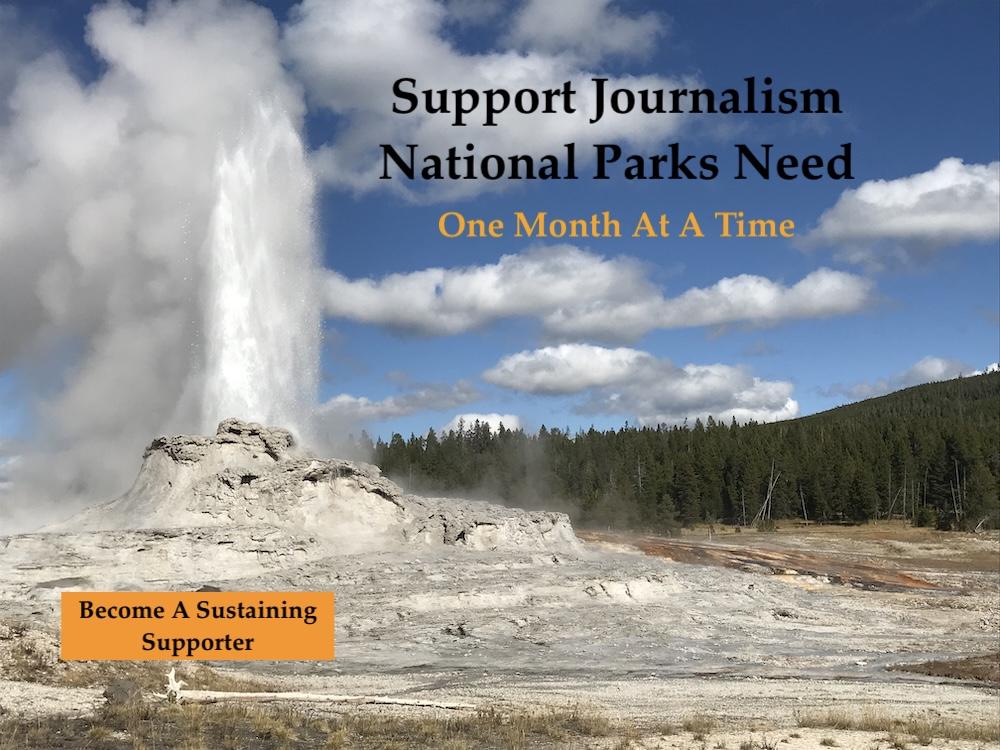There is an amazing number of guides to the national parks on the market, from guides specific to individual parks and national guides to insider's guides and trail guides and photography guides. But is there a perfect guide?
Many of the major guidebook publishing houses -- Lonely Planet, Frommer's, Fodor's and Moon, just to name four -- seem to apply the cookie cutter approach. They build a template, and then ask their authors to fill in the details of that template. As a result, if you have one of their guides, you can easily surmise what will be contained in another one.
But is that the best way to go?
A few years ago a guide to Yellowstone National Park, Yellowstone Treasures, reached my mailbox. It was not a major house's book, but one written by a woman, Janet Chapple, who had grown up in the park. And it was wonderful, in large part because it didn't take a cookie cutter approach, and because she had all these wonderful insights she had gathered from her life in Yellowstone.
(Speaking of Yellowstone Treasures, now in its third edition, the book is celebrating its 10th anniversary and Ms. Chapple is offering a 30 percent discount on purchases made via her website through January 20, 2013.)
Of course, it's not always easy to find someone who grew up in a park, held onto all those insights, and knew how to put pen to paper (or pixel to monitor). That's not to say there's not a better template that can be created to produce a guidebook that's not only more user friendly, but one that is truly outstanding and unusual in its contents.
So, if you were going to write a park guidebook, or simply propose an outline for one, what would you put in it? What must-have information merits inclusion? Lodging and dining seem obvious, and some trails, but what about paddling or backpacking information, birding or wildlife watching, nearby destinations and details on gateway towns?
How would you structure it? Forget better mousetraps. Can a better guidebook be built?

 Support Essential Coverage of Essential Places
Support Essential Coverage of Essential Places







Comments
The question depends somewhat on if you're creating a guidebook for one national park, or if you're intending to create a guidebook for many/all parks.
To use two of my favorite parks as examples, a guidebook for Carlsbad Caverns should be markably different than, say Dry Tortugas. Food, water, and lodging are essential in any guidebook.
The idea of loading up on backcountry information seems logical, but is actually something I'd shy away from. The reason is that something like 99% of all visitors to National Parks measure their visit in hours, not days. They might want to know what's in the back country, but they're not ever actually going to see it, so much more than a general description is superfluous. A taste to excite them, and let them live vicariously through those who do experience our parks to the fullest is enough. Additionally, back country experiences tend to be full of hidden and secret spots. If you tell, they're not a secret anymore!
So if I'm not including that, what am I including? The front-country experience is well documented in various guidebooks already, but can't be ignored. It's largely why people buy guidebooks in the firstplace.
In addition - and this is where many guidebooks fall short - I would include the local flora, fauna, history, geology, and culture. Nothing makes the typical tourist feel like they've really experienced the park quite like seeing wild animals. But even if they don't (and an hour on a road in the middle of the day means they probably won't), an overview of the various trees, shrubs, etc. is just as valuable. Likewise, the land itself is often overlooked. How did it get that way? The rocks, canyons, caves, hills, plains, etc all evolved in their own unique way and it's a story that can be shared. Finally, come the people. Many people go to parks to get away from people, but yet these lands weren't abandoned. There is a story to be told of the people who inhabited that particular place, what they did, why they did it, and what happened that they're no longer there.
Different parks will have different things to add, and different emphasis. Certainly, there isn't much history to Biscayne National Park - but even there, the story of how the park came to exist is worth including in the book. You won't have much tree-life to talk about at Tallgrass Prairie, but you will have the story of the plains themselves, not to mention an area of extensive history.
So yes, include the hikes, include some stunning full color photographs, include the rivers and lakes and let people know where they can ride a horse or paddle their canoe. But also show them what it is they're seeing and help them understand the experience and understand why these lands need to be protected in the first place.
Like a passport with bar codes that take a smartphone to an online map selection with more detail. rangers could have stamps to issue.
Thank you so much, Kurt, for your very kind remarks about Yellowstone Treasures.
May I take this opportunity to also tell you how much I like your website? I come here whenever I want to read a thoughtful and honest discussion about something pertaining to national parks (and I do like many of the other parks, too!).
Janet